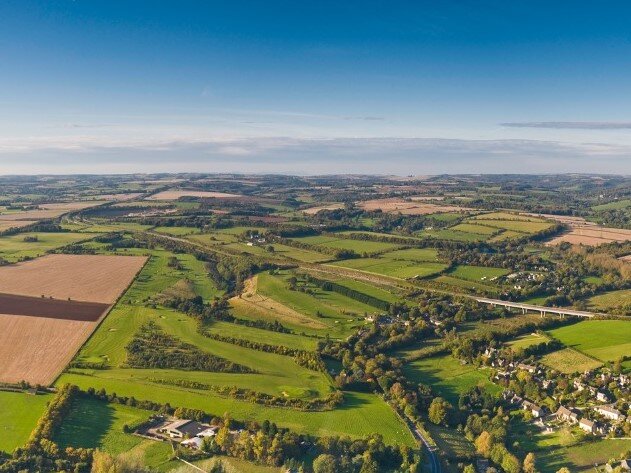What makes a piece of land suitable for development?
If you have a parcel of land that you feel might have development potential and you are looking to sell your land for development, here are a few considerations to think about before approaching a developer or agent.
There are a lot of factors that effect a site getting planning permission and building housing on and if we were to list all of them, this would be an exceptionally long read. Below are some of the most important factors to bear in mind to help decide if you think you can sell your land for development.
Local Planning Policy – Will it get planning permission?
The only way to really understand if you land or building will get planning permission and thus is suitable for development is to understand if it complies with local and national planning policy or not. If it doesn’t, there Is a chance the site could still get planning however might be considerable harder, take much longer and cost a lot more.
The factors determining if you land is suitable for development will vary depending on the context of your site as whether the land is deemed Brownfield or Greenfield land.
If your site currently has buildings on it or once had buildings on it, then this is known as Brownfield or previously developed land. If it is also in a built-up area and close to other housing and local amenities, it most likely will comply with planning policy and thus has the strongest chance of getting planning permission.
If your site has not been previous developed these are known as Greenfield sites. These are typically more rural. The likelihood of getting planning permission will depend on the local planning policy set out in the local plan or core strategy and Neighbourhood development plan (NDP).
Within the local plan, check the area has been identified for housing growth and if so, has it been achieved or not? You will want to check the status of the 5-year land supply so see if the local authority is on track or behind the required target.
If your area has a Neighbourhood Development Plan (NDP), it is certainly worth spending some time looking through it and understanding the local planning policy. You will certainly want to check whether your site is in the settlement boundary or not. This can be found on the village policy map within the NDP or online interactive maps. What stage the NDP i.e. adopted or still emerging? Has it met its housing targets identified in the local plan? Is the site allocated within the NDP?
These factors are key to determine if your land is suitable for development. Even if it does meet planning policy, it does not mean it will get planning permission. There are several other practical factors to be considered if planning will be granted and new homes could actually be built.
Access
Access is probably the next most important factor to consider if your site is suitable for development.
How is the site accessed? Can vehicles get to it? Whilst it might seem obvious and look easy to access the site say if off a main road, there are lot of issues that can arise around access such as visibility angles (splays) and width of the access which can affect how viable the site is for development. It also may be the case the existing or even proposed access to the site, isn’t actually owned by you and thus might need to be acquired by purchasing another bit or land or houses to find a route in.
Flooding
The third major factor to consider is the likelihood of flooding on the site. This is very easy to obtain by going to the Environmental Agency website and putting in the post code. Ideally the land is within a Flood Zone 1 however even if not, it is still possible to get planning and build on the site, but it may just be harder.
Land Designation
You will want to make sure the land lies outside of any protected areas such as conservation areas, Greenbelt or Areas of Outstanding natural beauty (AONB). Again, these factors do not mean it is impossible to get planning on the site and thus make is suitable for development however they add to the difficulty in doing so.
Drainage
This factor is mostly overlooked by a lot of landowners. How will the site be drained? The best scenario is there is a local stream that can be used to drain water from the development however if that might cause flooding elsewhere obviously that won’t work. It might be you have to connect to the local main sewer which may or may not be feasible and thus consider private sewage treatment plants or septic tanks. Given the current push for SuDs on development sites by local authorities, you need to determine how the site can be sustainably drained to reduce surface run off and flash flooding. This could be through soakaways if infiltration rates allow, attenuation ponds or tanks to slow the discharge of water or into another local watercourse if possible, however this may require permission from other landowners.
We could go on as there are many more factors that would need to be determined such as contamination, ecology, overhead power cables, easements and covenants over the site, Public Rights of Way (PROW), TPOs, listed buildings etc the list goes on and this is before we even think about market factors affecting the sale of houses in the area.
As you can see there is a lot can needs to be considered to decide if land is suitable for development which is why It can be better to talk to a developer who can help advise you about the likelihood of getting planning on your site based on these factors.
As a principle developer Marches Homes deal with these considerations on a day to day basis and is well equipped to help you determined if your land has development potential or not. If you would like to discuss your land may be suitable for development, then please do get in touch with our Land Director Miles, who would be more than happy to offer a free, no obligation consultation with you on the chance of getting planning on your land and help steer you in the right direction.
Miles Pattison-Appleton
Land Director
miles@marchehomes.co.uk
07772814468


